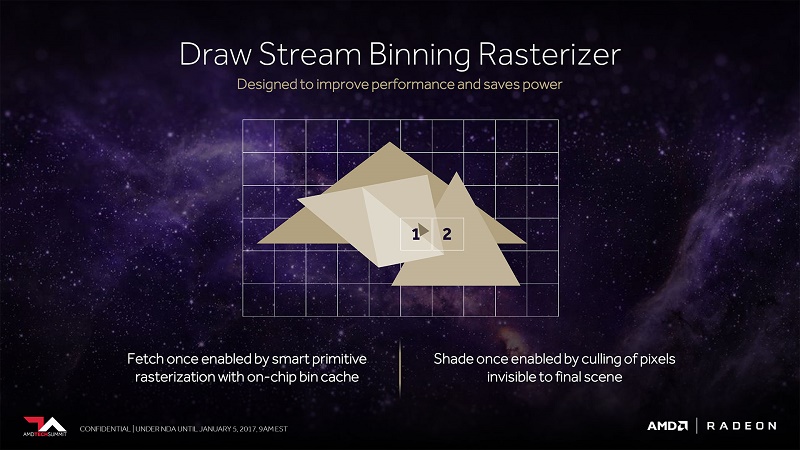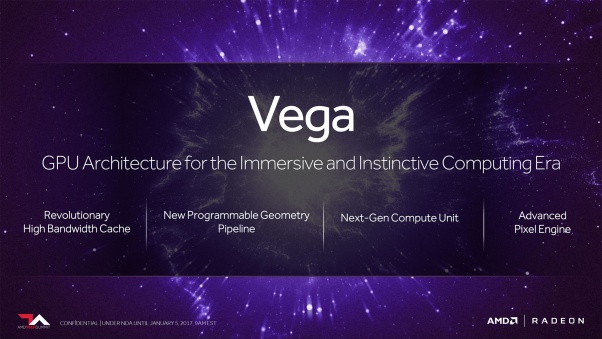AMD Vega GPU architectural analysis
Draw Stream Binning Rasterizers
In simple terms, rasterisation is what turns 3D shapes in games into pixels, with AMD’s new Draw Stream Binning Rasterizer being a new option for AMD to use to cull pixels and improve performance in two ways.Â
First, this new method will help Vega to determine which pixels to shade and can reduce the work that the GPU needs to do. Pixels can only be one colour, but as you can see in the image below, multiple pieces of geometry can be present in that space. This new rasterizer will help the GPU to determine what data to use when shading, reducing memory access and power consumption.Â
AMD’s new DSBR approach is looking at Rasterization using a Tile-based method, which is done a lot on mobile products and has even been implemented on Nvidia GPU architectures since Maxwell.  One other effect of this tile-based method is that is can effectively lower memory bandwidth requirements, which can give products a higher effective memory bandwidth when doing certain tasks.Â
The most important part of rasterization methods is that it eliminates pixels that are not visible in the rendered scene, which reduces the work that the GPU needs to do. Â Â
Nvidia has been using Tile-based rasterization methods ever since their Maxwell GPU architecture, though that was something that Nvidia kept under wraps until it was revealed in mid-2016.
Â
Â
Conclusion
All-in-all, AMD’s Vega architecture makes a lot of changes from their previous GPU designs, many of which will have a significant impact on AMD’s GPU performance.Â
AMD’s memory design alone can be seen as nothing but transformative, especially when considering the use of GPUs for compute rather than gaming. Now Vega can have access to seemingly limitless amounts of data, which has the potential to transform how people use GPUs, though in the gaming world performance benefits of this new memory controller design will be limited.Â
On the compute side, Vega will deliver a lot more GPU performance per Stream processor, with a design that will offer increased clock speeds as well as increased levels of work per clock cycle. These improvements will be seen from many angles, through the geometry pipeline through increased engine throughput and the use of Primitive shaders as well as in Vega’s NCUs which can offer significantly more GPU performance through the use of “Rapid packed math”.
A lot the changes to AMD’s GPU architecture will significantly improve AMD’s performance in both gaming and compute tasks, leaving the company in a great position moving forward. Â
You can join the discussion on AMD’s Vega architecture on the OC3D Forums.Â
Â





